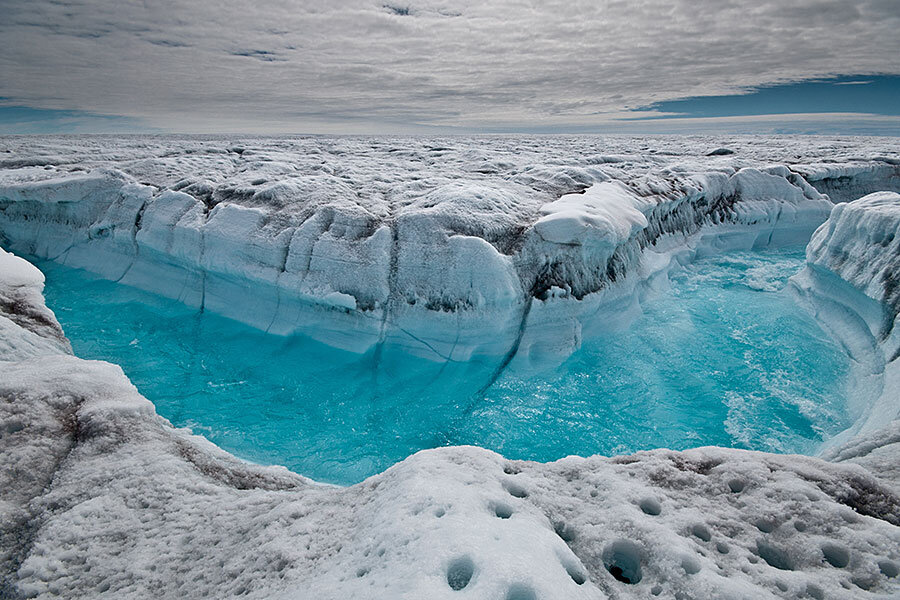Greenland’s melting ice sheet: a breakthrough in understanding?
Loading...
A study published Wednesday, assessing the role of cloud cover in the melting of Greenland’s ice sheet, could help researchers better understand and make predictions about the impact of melting Greenland ice on global sea levels.
Greenland’s is the second largest ice sheet in the world, second only to that in Antarctica. So deepening our awareness of its systems could be critical in assessing the global picture.
"Over the next 80 years, we could be dealing with another foot of sea level rise around the world," says Tristan L'Ecuyer, a professor at the University of Wisconsin-Madison and co-author of the cloud-cover study. "Parts of Miami and New York City are less than two feet above sea level; another foot of sea level rise and suddenly you have water in the city."
It was already widely known that air temperature, water temperature, and precipitation have a significant impact on ice-sheet melt, but the importance of cloud cover was poorly understood.
The new study shows that while clouds can alleviate warming by reflecting the sun’s rays back into space, their predominant effect on Greenland's ice is to trap heat beneath them, preventing melted ice from refreezing, thus intensifying the melting of the ice sheet.
The impact of cloud cover is just one more factor to integrate into models of global warming, melting ice sheets, and rising sea levels.
The Greenland ice sheet has been shedding mass at a rate of about 287 billion metric tons per year since 2002, according to NASA’s GRACE satellites. Its bigger brother in Antarctica has been doing so at a rate of about 134 billion tons per year.
The latest study joins another, published in the journal Nature Climate Change, which indicates that the Greenland ice sheet is losing its capacity to absorb meltwater, meaning that as other factors (such as cloud cover) converge to transform the ice to liquid, ever more mass may be lost.
Indeed, “the Arctic has seen unprecedented declines in the summer sea ice area, leading to larger and longer exposed open water areas,” according to another study, published in Geophysical Research Letters.
The Antarctic ice sheets, while melting at a slower rate, are critically important to consider, too, covering almost 5.4 million square miles, compared to the Greenland sheet’s 650,000 square miles.
Should global temperatures rise to about 3 degrees Celsius (5.4 degrees Fahrenheit) above the pre-industrial era, states a 2015 study in the journal Nature, then the next few centuries could witness a collapse of ice shelves (which hold back the ice sheets), raising sea levels by as much as 10 feet by 2300.
But there is hope. The same study concludes that should temperatures rise by no more than 2 degrees Celsius above that same benchmark, then catastrophe could be averted.
Indeed, the recent United Nations climate conference, which took place in Paris last December, reached an agreement to limit global warming to well below 1.5 degrees Celsius above pre-industrial levels.
While this makes no guarantees, it certainly represents huge strides in the right direction. And every piece of knowledge that scientists uncover assists in global efforts to mitigate the impact of climate change.






